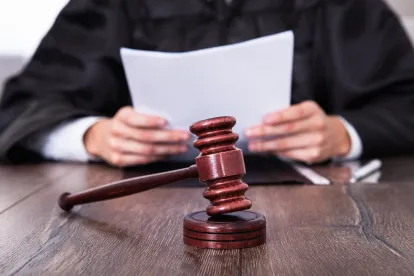A recent Sixth Circuit decision addressed whether FCRA imposes a technical-accuracy standard or an “inaccurate or misleading standard” on § 1681e(b) plaintiffs.
In Twumasi-Ankrah v. Checkr, Inc., 2020 U.S. App. LEXIS 10427 (6th Cir. April 2, 2020), the Sixth Circuit reversed and remanded the decision of the district court dismissing a former Uber driver’s FCRA claim against Checkr for failing to “follow reasonable procedures to assure maximum possible accuracy” such that Checkr sent information that “was so misleading as to be inaccurate.”
As part of a consumer report for Uber, Checkr provided information from the Ohio Bureau of Motor Vehicles (BMV) that indicated Plaintiff had been involved in three “accidents.” The district court dismissed the suit, agreeing with Checkr that Plaintiff failed to plausibly allege that Checkr reported inaccurate information about him, not meeting the clear Sixth Circuit precedent that a plaintiff must allege a CRA reported “factually inaccurate” information about them to state a claim under 15 U.S.C. § 1681e(b). The district court found that, although Checkr’s report was incomplete because it failed to state the party at fault in each accident, it was technically accurate because Plaintiff was involved in all three accidents.
U.S. Circuit Judge Karen Nelson Moore noted the parties’ dispute in this case demonstrated the lack of a cohesive definition of “inaccuracy” among Sixth Circuit district courts for purposes of a claim under FCRA. Judge Moore, however, united the Sixth Circuit, holding, “to state the first element of a claim under § 1681e(b), a plaintiff may allege that a CRA reported either ‘patently incorrect’ information about them or information that was ‘misleading in such a way and to such an extent that it [could have been] expected to have an adverse effect [on the consumer].”
The Sixth Circuit reasoned that Congress’s “maximum possible accuracy” language implied an intent to hold CRAs to a higher standard than mere technical accuracy. Additionally, the court reasoned not only do surrounding provisions in FCRA show Congress’s concern with the completeness of a credit report, in addition to the accuracy of the report, adjacent case law holds furnishers to this higher standard, supporting the decision to hold CRAs to this higher standard as well.
Plaintiff alleged that, despite knowing that the BMV includes information on all accidents regardless of fault, Checkr passed the information along to Uber without conducting any further investigation. Further, other records existed that indicated Plaintiff was not at fault in two of the three accidents reported and, therefore, Checkr’s report made the former Uber driver appear to be a more careless driver than he actually was. The complaint alleged that, as a result, Uber fired Plaintiff. The court found that, taken as true, the preceding allegations plausibly suggested that Checkr reported misleading information that could have been expected to have an adverse effect on Plaintiff.
Checkr argued the term “accident” did not have a negative connotation and P was probably fired for other reasons. The court rejected these arguments, noting accepting them would require the court “to ignore factual allegations contained in [Plaintiff’s] complaint” which it could not do at this preliminary stage.
Although U.S. Circuit Judge Kethledge expressed doubts as to Plaintiff’s ability to prove proximate causation, he concurred that Plaintiff had plausibly alleged his claim, “albeit barely.”
In a dissenting opinion, U.S. Circuit Judge John K. Bush agreed that the words “maximum possible accuracy” established a requirement for CRAs to produce consumer reports that are “more than just technically accurate.” However, Judge Bush agreed with the district court’s dismissal because “the amended complaint did not plausibly allege that there was misleading information in Checkr’s report or that misleading information caused Uber to fire [Plaintiff].”
The Sixth Circuit’s adoption of the “inaccurate or misleading” standard coincides with the decisions in every other circuit that has considered this issue.




 />i
/>i

